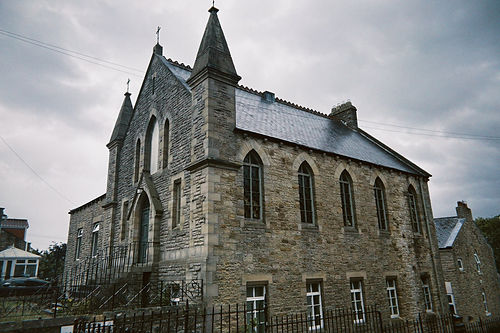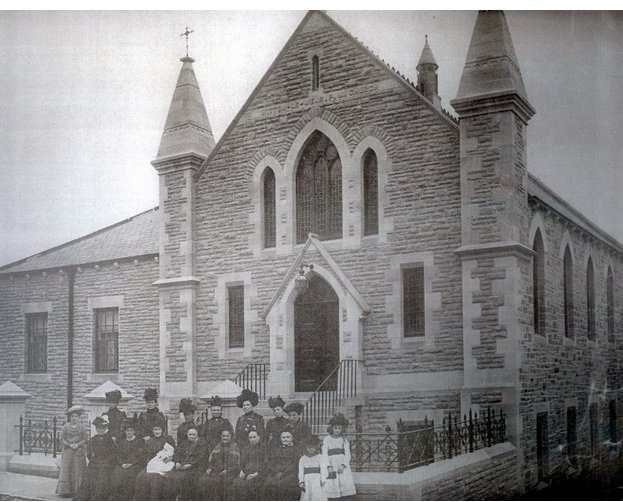
Witton le Wear
Witton le Wear Primitive Methodist Church
Last Updated:
26 Sept 2025
Witton le Wear
This is a
Chapel, Place of Worship
54.675745, -1.772832
Founded in
Current status is
Extant
Designer (if known):

Witton-le-Wear's Primitive Methodist Chapel is an absolute beast. There's nothing primitive about it, and it's certainly outlived the Wesleyan chapel which used to stand over the road until the last century.
Methodism has a rich history in Witton, and was one of the first villages to be visited by missionaries round here in the early 19th century. A loose congregation was formed from 1812 which worshipped from the house of one of its followers. It wasn't until 1830 when a formal society was registered, and 20 years after that they gained their own chapel on this site. This was a modest single floor building which had a single room.
This remained in use for half a century, but the congregation grew as redundant lead miners across Weardale migrated east to the growing urban sprawls of Bishop Auckland, Shildon and Darlington. In 1901, our chapel was built.
This was constructed alongside the Sunday School next door for the Bishop Auckland circuit, which is *basically* the Methodist equivalent of a parish. Each building was to accommodate 200 worshippers and schoolchildren respectively, costing a total of £1500. Much of the funds came from local industrialists, most notably the Mein family whose coal interests sprawled South West Durham and later South Yorkshire.
For such a small village a grand Prim like this is remarkable, and certainly cast jealousy across the village as the ancient Anglican chapel was rebuilt by a certain Mr Charles Hodgson Fowler a year later for £3000!
Listing Description (if available)


With each Ordnance Survey map, we're going to take a step back half a century to gain an insight away from modernity into industrial Durham. Firstly, the survey of 1973 will appear familiar to us. The main feature which strikes my attention is the Post Office and lack thereof today, with the village lacking a shop since the late 90s. It does still retain 2 pubs out of 3, but it means folk here rely on private transport and thin bus services to get around. You also also see the contrast between the old village and modern suburban developments, with St James' Gardens being the first of a larger estate built here which now continues west to Witton Tower.
The 1897 plan tells quite a different story. It is comprised solely of its medieval spine with a railway and fireclay drift lining the south of the settlement. The green, which is on a fairly steep bank, forms the dividing line between those of a Primitive Methodist persuasion and the Wesleyans and Anglicans. Traditional village functions like the Smithy and Sunday School stoof close to Witton Hall - one of two larger manor houses of the village.

The 1861 Ordnance Survey provides even greater depth to our understanding. The village at this time was propped up by a couple of industries - agriculture and coal. Witton le Wear isn't known for its coal, but Fredericks West Pit and Marshall Green Colliery stood nearby and both had closed by the 1890s. The railway certainly facilitated the success of the latter. The Primitive Methodists' influence had already been a staple of the settlement for some 40 years and had no doubt been helped by the local mining heritage too.

The turn of the century chapel on the south side of The Green. Taken in July 2025.

A photograph of the church in the 1910s and 20s, with worshippers in their finery. The scale is only accentuated by the site elevation with the lower floor accommodated by the steep bank down to the Wear. Unknown original source.
